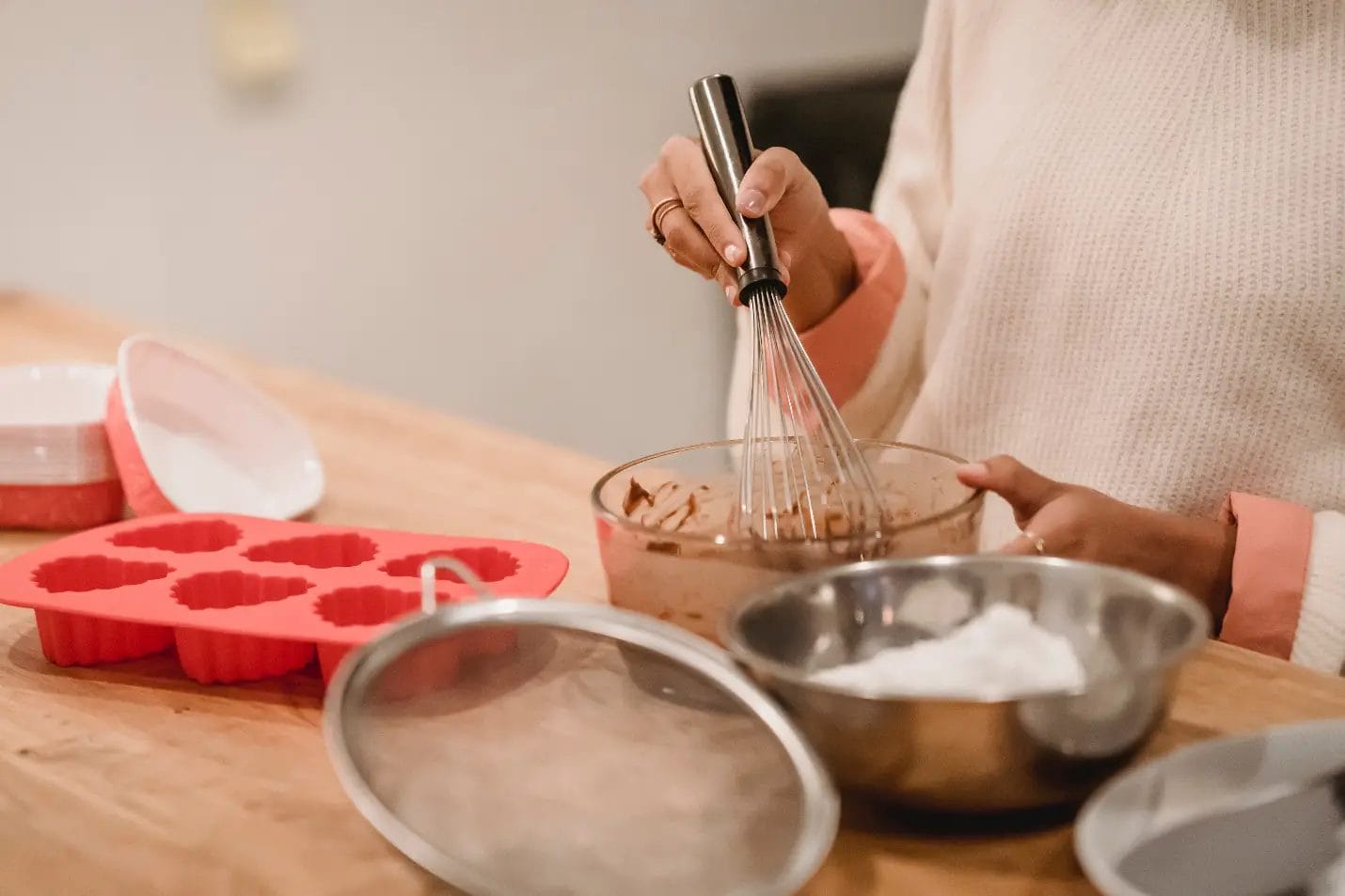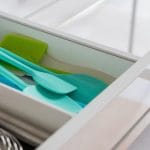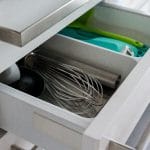Since the international food grade approval, the silicone industry has fully penetrated the global kitchenware market. Silicone cooking utensils have become a consumer favorite. The use of silicone kitchenware by popular chefs, international cooking shows, and social media cooking enthusiasts has boosted the worldwide popularity of this kitchenware item.
According to market statistics, the current global silicone industry is worth USD 16.7 billion, which is expected to double over the next decade. Silicone cooking utensils and kitchenware items represent a big chunk of the silicone industry.
Continue reading below to learn why silicone cooking utensils continue to gain popularity and the six top silicone cooking utensils available in the market.
Why Are Silicone Cooking Utensils So Popular?
Silicone is a synthetic form of plastic made from silicon and oxygen bonding. The solid structural bonding within silicone molecules makes silicon durable and ideal for kitchen uses.
Some of the advantages of silicone cooking utensils are as follows:
- Silicone cooking utensils have a rubber-like structure, making them flexible and highly malleable. This quality allows silicone utensils to be molded into various sizes and shapes: spoons, whiskers, spatulas, cupcake molds, etc. The flexibility allows silicone utensils to reach every corner and part of a pot, regardless of the pot’s shape. Moreover, the flexible silicone spatulas can perfectly scrape off cooking batters, making cleaning easy while reducing food wastage;
- Silicone cooking utensils are resistant to extreme temperatures, making them ideal for high-temperature baking, cooking, oven baking, and freezing. This quality ensures that nothing gets melted into the food contents over high temperatures;
- Silicone cooking utensils do not conduct heat. This aids to their convenient handleability and usage;
- The rubber-like soft texture protects the pots and pans from scratches and damage;
- Silicone cooking utensils are inert and do not react with hot liquids or harsh chemicals. This characteristic ensures that food remains uncontaminated and the silicone utensils remain undamaged for long periods;
- Silicone bakeware and cupcake molds are non-sticking and reusable. This helps reduce the need for paper baking liners and non-stick baking sheets;
- The US Food and Drug Administration has approved silicone for being non-toxic and safe;
- Silicone cooking utensils can be recycled into new utensils and molds. This feature makes them eco-friendlier compared to plastic utensils;
- Silicone cooking utensils are lightweight and are available in vibrant colors and different shapes. The weight makes them an attractive purchase for old and physically challenged individuals who otherwise struggle with a heavier cooking utensil. Moreover, children are drawn to the colorful appearances of silicone kitchenware and develop an interest in cooking.
Top Ten Silicone Cooking Utensils
All silicone cooking utensils share similar characteristics and qualities, making them ideal for multiple culinary uses. However, six silicone cooking utensils top the list due to their usability and special features.
1. Silicone Spoon Set
Like all spoons, a silicone spoon is used for stirring and mixing liquids and food items. Silicone spoons often come in a set of different colored and differed sized spoons. The spoons have rubber-like bodies, making them bendable and malleable for any pot. Unlike metallic utensils, silicone spoons do not get overheated from prolonged heat exposures and can be handled without worry or additional cooking gloves.
Moreover, the different sized silicone spoons help measure spices and follow detailed recipes.
Furthermore, unlike a wooden spoon, a silicone spoon is impermeable and does not retain moisture, stains, and odors. This quality makes them more hygienic, safe, and sanitary than wooden spoons.
2. Silicone Spatula Set
Silicone spatulas are the most popular type of silicone cooking utensils. Silicone spatulas are available in different colors and sizes. The soft and flexible structures make them superior to metallic spatulas that tend to damage a pan’s surface. Rather, silicone spatulas perfectly scrape off batter and food items from bowls and pots without causing any damage and ensuring that every last drop of food is saved.
Silicone spatulas often come in a set of three, five, or more spatulas. The variety in sizes, depths, and shapes makes the complete set perfect for any cooking and scraping need. For instance, a thin and long silicone spatula would help scrape off any whisked batter from inside a narrow cup. At the same time, one could use a wide and long silicone spatula to apply frosting onto a cake evenly.
3. Silicone Whisks
Silicone whisks are excellent for whisking thick gravies, liquids, and beating eggs. Available in various colors and sizes, one can find a whisk ideal for every pot and bowl. For instance, one can use a large silicone whisk to mix cake batter, while a small whisk is ideal for beating coffee in a cup.
Silicone whisks do not get damaged from excessive whisking and are highly durable. Moreover, silicone whisks are dishwasher friendly and can easily be rinsed out with water. One does not have to worry about drying a freshly washed silicone whisk as they remain stain-free and do not retain moisture.
4. Silicone Heat Resistant Baking Gloves
Handling a sizzling dish right out of the oven can burn the hands even through thick cooking gloves. Silicone heat-resistant baking gloves safely protect the hands regardless of how hot the dish or pan is. Silicone baking gloves are excellent heat insulators and require no additional layering.
Compared to traditional large baking gloves, silicone gloves are lightweight and small in size. Moreover, unlike conventional fabric gloves that need to be washed in detergent and left aside for drying, silicone baking gloves can be washed under water and stored right away.
Conventional fabric baking gloves tend to get thinner and worn out with prolonged heat exposure, while silicone baking gloves can retain their thickness and quality over long periods. Their durability and heat resistance make them far more superior to conventional baking gloves.
5. Silicone Baking Molds
Silicone is melted to make different shapes of baking molds. These baking molds can be round or heart-shaped or have detailed and intricate designs. Silicone baking molds are popularly used for baking cupcakes, sugar cookies, and biscuits. The variety of mold designs allows consumers to make festive baked goods to fit different occasions.
For instance, a mermaid-shaped silicone baking mold would make beautiful mermaid sugar cookies for a birthday party, while a pumpkin-shaped mold would be excellent for a Halloween celebration. These silicone banking molds are easy to clean and are dishwasher friendly.
Moreover, the non-stick characteristic of silicone requires no additional butter paper for baking. Rather, a thin layer of oil or grease would help bake perfectly shaped cakes and biscuits.
Furthermore, unlike metallic baking molds and trays that need sufficient space for storage, one can easily fold a silicone baking mold or sheet into any tight cupboard or drawer. The folding does not damage the mold’s usage and functionality in any way.
6. Silicone Baking Mats
Silicone baking mats are a recent introduction to the silicone kitchenware family and have taken the industry by storm. A silicone baking mat is made from fiberglass and food-grade silicone. These baking mats have great non-stick qualities and are commercially available in different sizes, colors, and thicknesses. The variety in size and thickness makes them perfect for fitting pans of different sizes and shapes.
Some common uses of silicone baking mats include:
- Silicone baking mats work like butter paper and cover the baking pan or tray. Unlike a butter paper or tray liner that is discarded after one use, one can reuse a silicone baking mat multiple times;
- Silicone baking mats can help protect the baking tray’s surface from damage. Excessive baking or direct heat can crack and dry out a pan or tray’s surface. Progressive damage can lead to corrosion and food contamination;
- Silicone baking sheets are thin and flexible enough to cover food items while baking. Conventionally, aluminum foil is used to wrap up a chicken roast or potatoes before baking. Unlike an aluminum foil that has to be discarded after one use, one can reuse a silicone baking sheet multiple times;
- One can place a silicone baking mat on kitchen counters and knead the dough on them. Their non-stick qualities ensure a convenient kneading and easy cleaning process.
Final Thoughts
Silicone cooking utensils have revolutionized the kitchenware industry. Their vibrant appearances and variety of shapes and sizes make them ideal for most culinary tasks. Apart from being popular among regular households, silicone cooking utensils are seen being used by top chefs worldwide. Their non-toxic and user-friendly designs make them a consumer favorite around the globe.
The most popular silicone cooking utensils include spoons, spatulas, baking mats, baking molds, whisks, and heat-resistant gloves.







